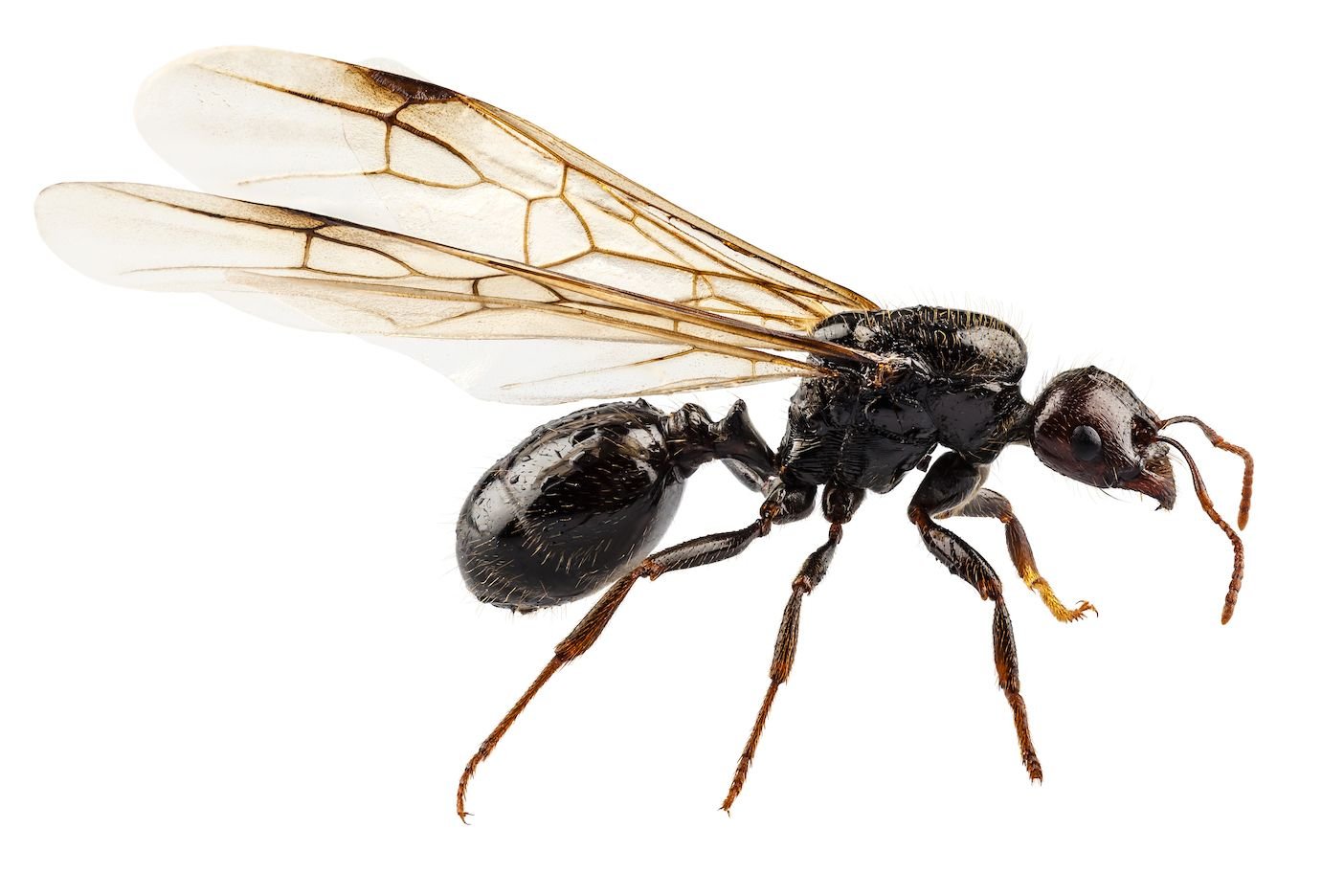
It's of course not because of consuming a certain energydrink that ants fly or get or have wings. Although it would be an interesting kind of evolution..But ants fly since there excistence.
And this seems why.
Ants with wings can be a pretty common sight at certain times of the year because at least some members of almost all ant species can develop wings and fly. This is because winged ants are swarming ants seeking to breed and reproduce. Flying ants may be male - the drone, or female - the queen; both of which are reproductive ants that are seeking a mate with whom to breed the next generation of ants for the survival of their colony.

Flying Ants
The "swarms" of flying ants can number into the thousands that are flying from their colonies in early to mid spring on their mating, or "nuptial" flights. It is important that the colony send out a large number of swarmers because only a very small percentage actually make it through mating to start a new generation. The majority will be eaten by predators, such as birds or dragonflies, or die from lack of food or water.
The ants of a species within an area will generally all emerge around the same time because the swarming is triggered by temperature and other weather, such recent rains. Almost all ant species do swarm, and spring and fall are common seasons for the mating flights. However, there also are some species that mate in summer or at other times of year as well.
It is only these reproductives, however, who have wings, and they will be winged and able to fly only during the breeding season.
Ant species that do not swarm will not have winged members but will increase their populations through budding. (See Control Ant Budding for more about this type of ant reproduction.)
It is important to note that the foraging worker ants of any species that you see trailing on the sidewalk - or in your kitchen - will never have wings.
So if you do see winged ants in or around your home, you can bet that they are seeking to create to a new colony.
Once the male and female mate, the female "queen" will remove her wings to start a new nest. The male drone, whose only purpose in life is to mate, will live a few months at most, then die after mating. Thus, for that short period of winged life after mating, these ants are, for the most part, relatively harmless when found outdoors, and are simply part of the natural life cycle of ants.
Flying Ant Control
One positive aspect of swarming is that if you have been having problems with ants in or around your home, inspection of the swarm can help locate the nest and enable more effective control and elimination.
The most effective methods of control for ants are:
baiting along trails where ants have been seen.direct nest application with a properly labeled insecticide.
(For more information on these methods of control, see How to Get Rid of Antsand Controlling Pests that Pester You. Part 3: Ants.)
Control is generally only necessary if outdoor ants are causing a problem or if ants are being seen indoors. This is particularly advisable if flying or winged ants are found in the home.
Although it can simply be an ant or two that has lost its way during mating, it is advisable that the species be identified, because carpenter ants and termites (while these are not really ants, they are often mistaken as such), can cause significant damage to homes and buildings. And winged ones would mean they are attempting to extend their populations even further, potentially causing extensive damage.
